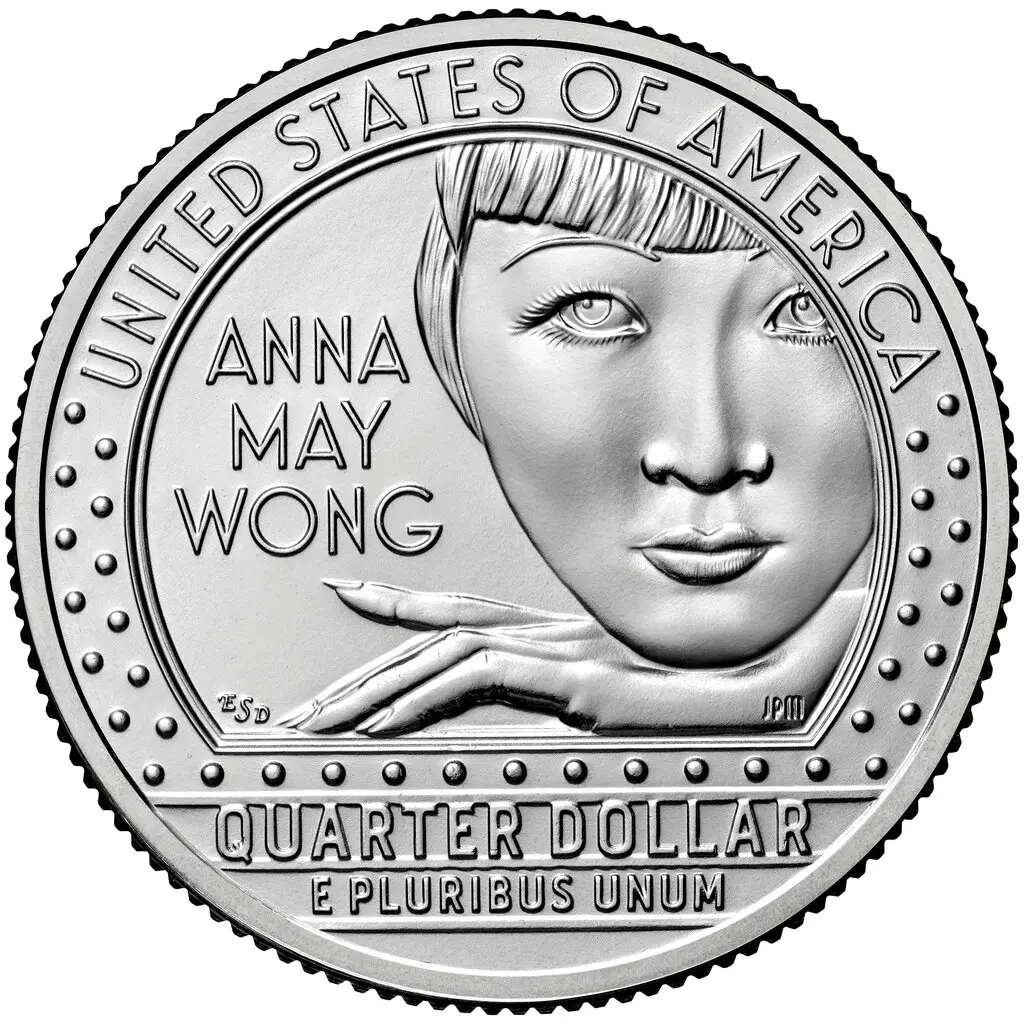
The reverse side of the Anna May Wong quarter, which honors the 20th-century screen icon considered to be the first Chinese American movie star.
Credit...U.S. Mint
By Soumya Karlamangla

Anna May Wong in a 1931 publicity photo for “Daughter of the Dragon.”Credit...Bettman, via Getty Images
The film star had a trailblazing career, but also struggled to secure meaningful roles as an Asian American actress in Hollywood a century ago.
LOS ANGELES — As a 14-year-old girl, the daughter of immigrants in this city’s Chinatown, Anna May Wong talked her way into her first role in a movie. Over the decades-long career that followed, she rose to become the first Asian American film star in Hollywood. When Wong died in 1961, The New York Times called the actress, known for her large, expressive eyes and flapper-era styles, “one of the most unforgettable figures of Hollywood’s great days.”
Now Wong is gaining another coveted role — on the quarter. Part of a new effort that also put the writer Maya Angelou and the astronaut Sally Ride on currency, the U.S. Mint on Monday will begin producing coins pressed with Wong’s image, a close-up of her face resting on an elegant, manicured hand.
The new quarter honors not just Wong’s trailblazing career but also the difficulties she faced trying to secure meaningful roles as an Asian American actress in an era of “yellowface” and anti-miscegenation laws. “Decades before the civil rights-generated category of Asian American existed, Wong grappled with how to be an Asian American actress,” Shirley Jennifer Lim, a Stony Brook University history professor, wrote in her book about Wong’s career.
The U.S. Mint is expected to create more than 300 million Wong quarters, and she will become the first Asian American to be on U.S. currency. It’s an honor that feels particularly meaningful given how much Wong struggled to be seen as American, Lim told me. “When you get change,” she said, “she could actually be there in the palm of your hand.”
Wong was born in 1905 in Chinatown, the daughter of a laundryman who ran a shop on Figueroa Street. Around that time, the movie industry was settling in Los Angeles, and productions were increasingly shot in Wong’s neighborhood.
“I would play hookey from school to watch the crews at work, though I knew I would get a whipping from my teacher, and later from my father, for it,” Wong is quoted as saying in the book “Perpetually Cool: The Many Lives of Anna May Wong,” by Anthony Chan. “I would worm my way through the crowd and get as close to the cameras as I dared. I’d stare and stare at these glamorous individuals, directors, cameramen, assistants and actors in greasepaint, who had come down into our section of town to make movies.”
Wong decided she wanted to act, and began playing background characters until her first leading role in “The Toll of the Sea” (1922) at age 17. But her career was stymied by the limited number of parts for Asian American actors and the stereotypes they often traded in. (Wong famously said that she had “died a thousand deaths” because she was killed in every film she acted in.)

Wong, right, in “My China Film” (1936), which she directed and produced on her only trip to China.Credit...UCLA Film & Television Archive
Wong was widely considered to be one of the most beautiful women in Hollywood, but often could not play romantic leads because of laws prohibiting actors of different races from kissing each other onscreen. She moved to Europe, where she enjoyed greater opportunities for nonwhite actors, starred in several films and even acted in a play opposite Laurence Olivier.
But she continued to bump up against unfair restrictions in Hollywood. When Metro-Goldwyn-Mayer was casting “The Good Earth” in the 1930s, based on the Pearl S. Buck novel about Chinese farmers, Wong was considered a shoo-in for the film’s leading actress role. But a white actor was selected to star in the movie, who would have played Wong’s husband, and she was taken out of the running. (The actress who eventually got the role, Luise Rainer, won an Oscar for her performance.)
“Anna May Wong was basically ‘hashtag representation matters’ decades before Twitter was even invented,” said Paula Yoo, a screenwriter in Los Angeles who wrote a children’s book about Wong’s life. “That’s why this quarter is important — because she’s minted, she’s part of Americana, she’s part of American history.”
The Wong quarter will be the fifth released this year as part of the American Women Quarters Program, which calls for five new coins each year from 2022 through 2025. Representative Barbara Lee, the California Democrat who sponsored a bill promoting the coins’ creation, said in a statement that she was proud to have led an effort honoring the “phenomenal” women who are often overlooked in American history.

Wong, left, in a promotional lobby card for “King of Chinatown” (1939). She received top billing in her role as Dr. Mary Ling.Credit...LMPC, via Getty Images
Along the Hollywood Walk of Fame on a recent morning, tourists tilted their heads to read the names emblazoned on the sidewalk. At the busy intersection of Hollywood Boulevard and Vine Street was a star highlighting in gold “Anna May Wong,” an honor the actress was awarded in 1960, one year before her death.
Next to Wong’s star was one for the actress Lucy Liu, who in 2019 became the second Asian American woman to receive a star on the Walk of Fame. In her speech, Liu thanked Wong for charting a path for her and other actors.
“We could actually start our own little Chinatown right here,” she joked, pointing to their neighboring stars.
#AnnaMayWong #AsianAmerican #Hollywood #Actor #Acting #Filmmaking #AAPI #ChineseAmerican #China #Chinese #StopAAPIHate #BIPOC #RepresentationMatters